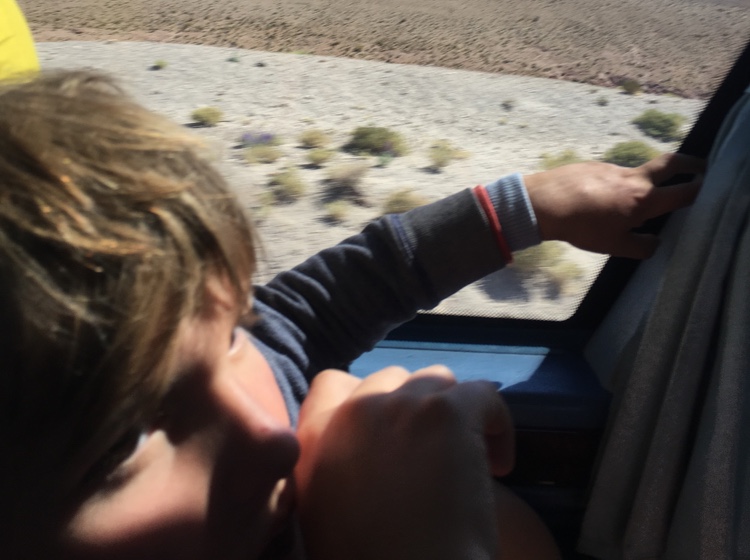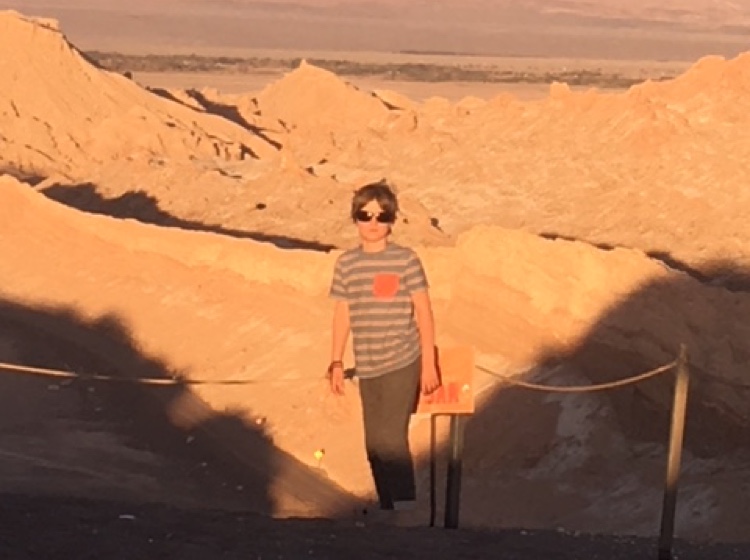The Sacred Valley is typically the area which tourists blow through on their way to Machu Picchu. We were advised by our friend Alan Brownstein to stay longer, and are grateful for the advice. There was something here for all of us, and while being fairly touristy, most tourists were passing through quickly and focused on one or two of the more famous Incan ruins. But the Sacred Valley is full of magnificent ruins — they dot the landscape like castles in a fairy tale.
You can be looking at a cliff and suddenly see windows and realize, Oh, that’s actually a temple.
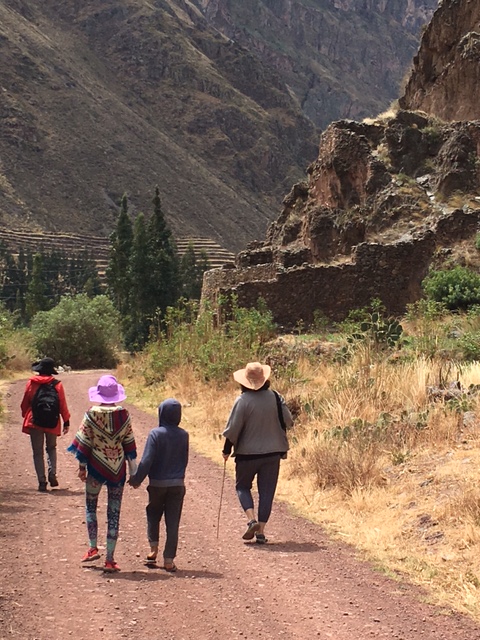
For someone like me, a frustrated archaeologist from the age of eight, it was a kind of a paradise and actually felt, despite the many restaurants offering pizza and cheeseburgers, sacred.

We stayed in a small hotel in Ollantaytambo, an Incan setllement surrounded by giant cliffs filled with, yes, ruined Incan structures.
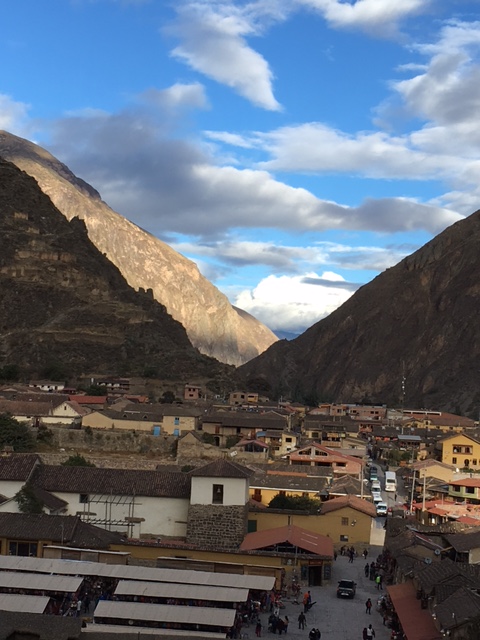
The town itself is very charming; the Incas designed canals that run through its narrow cobblestone streets, so you feel as if, wherever you go, you’re following a small river. There are no stoplights in the town; at the one major intersection, a uniformed policeman sits in a yellow kiosk with a STOP and a GO sign (or PARE and SIGA). We climbed up old fortresses where Inca warriors held off Spaniards to fight another day (but alas not that many). One day, we hired a guide who took us on a hike following the Urubamba River up to another river and another valley. Along the way we encountered interesting insects and, to put a large damper on that sacred feeling, a chicken who looked uncannily like Donald Trump…

There were also immense clouds of gnats. Our guide showed us a plant that repelled them and it worked great as long as we didn’t need perfect vision.
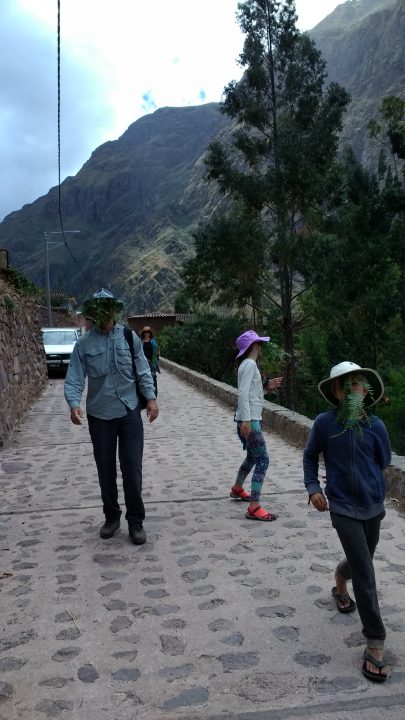
About halfway up a mountain, the Incas constructed a temple to the moon. It’s hard to describe the feeling of hiking through miles of wilderness, then entering a cave and seeing a perfectly carved wall — as if it had been there for centuries, waiting for us.

We made coca-leaf offerings at the altar carved with an Andean cross (representing the three levels of existence: death, this life and the spirit life, also known as underground, Earth and sky, as well as snake, puma and condor. Without getting too detoured into Incan cosmology, Andeans are very focused on this trinity, and the Incans spent a lot of their time and resources figuring out ways to communicate with the two other realms. Please forgive this massive simplification of a very complicated religion, but hey, I’ve got a travel blog to write). We took turns meditating (and snacking) in the “window into the future.”
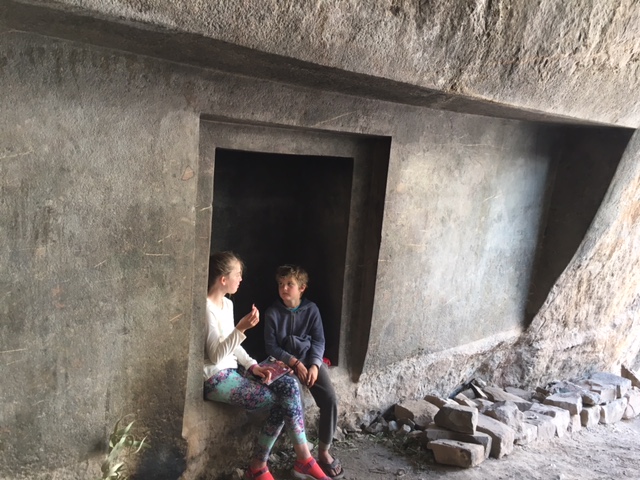
Another day we answered another need, the very Earthly, temporal need of a certain 9-year-old boy, and rode ATVs across the stunning landscape to a huge series of circular terraces designed by the Incas to test agricultural techniques at different altitudes with different crops.
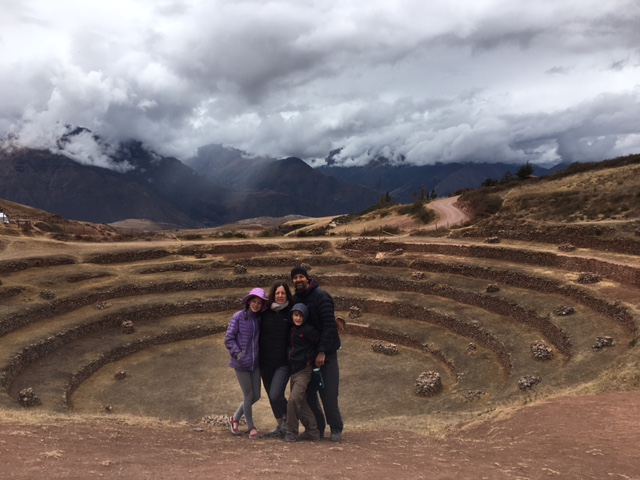
The need for ATVs (and the need for speed) was motivated by Julian. Julian’s two favorite things are small cute furry animals…
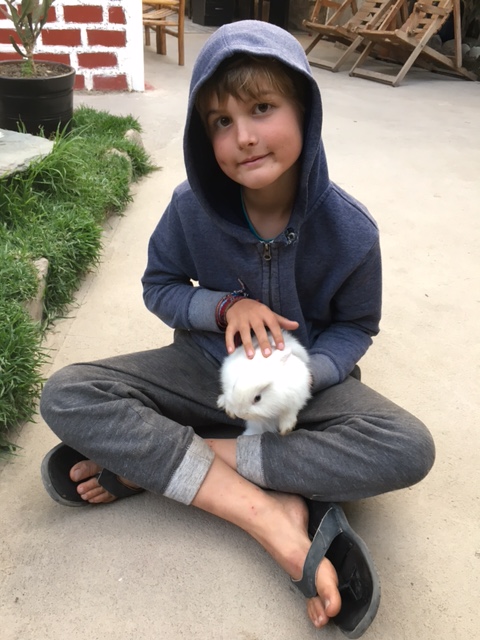
and loud fast machines…

Well, he found both in the Sacred Valley (as did we)…
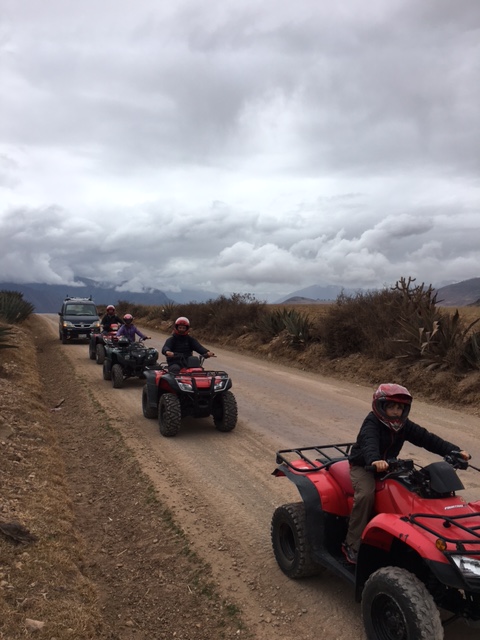
…Despite the fact that all of our vehicles had these very visible pronouncements.
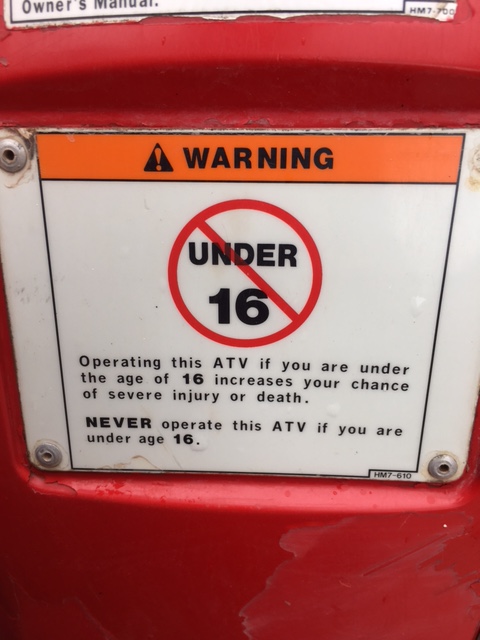
We all survived, which I am grateful for, and will not discount the assistance of the coca-leaf offering in the moon temple. One of the aspects of this trip I am most grateful for is being forced to find the sacred in the everyday.


